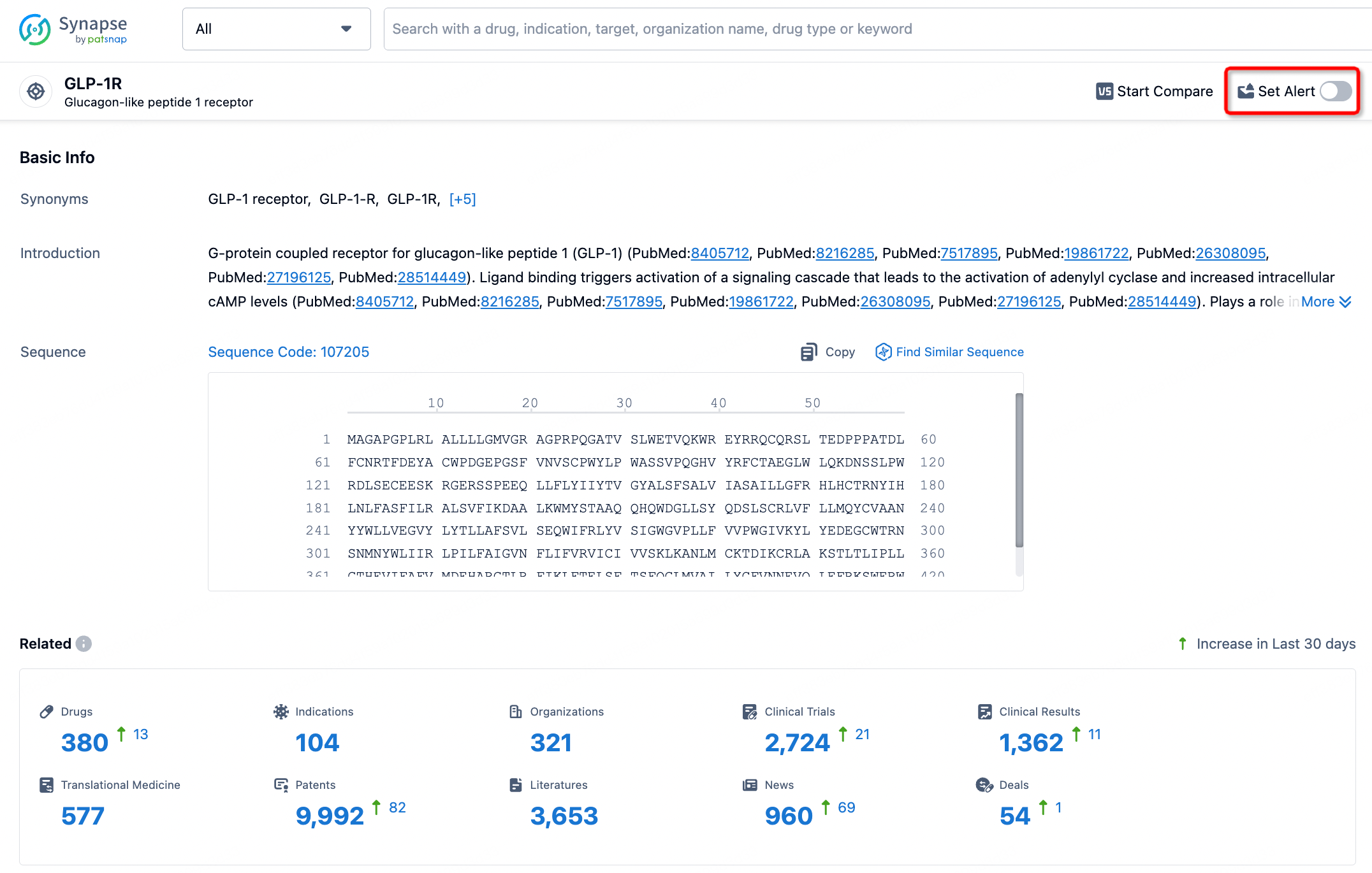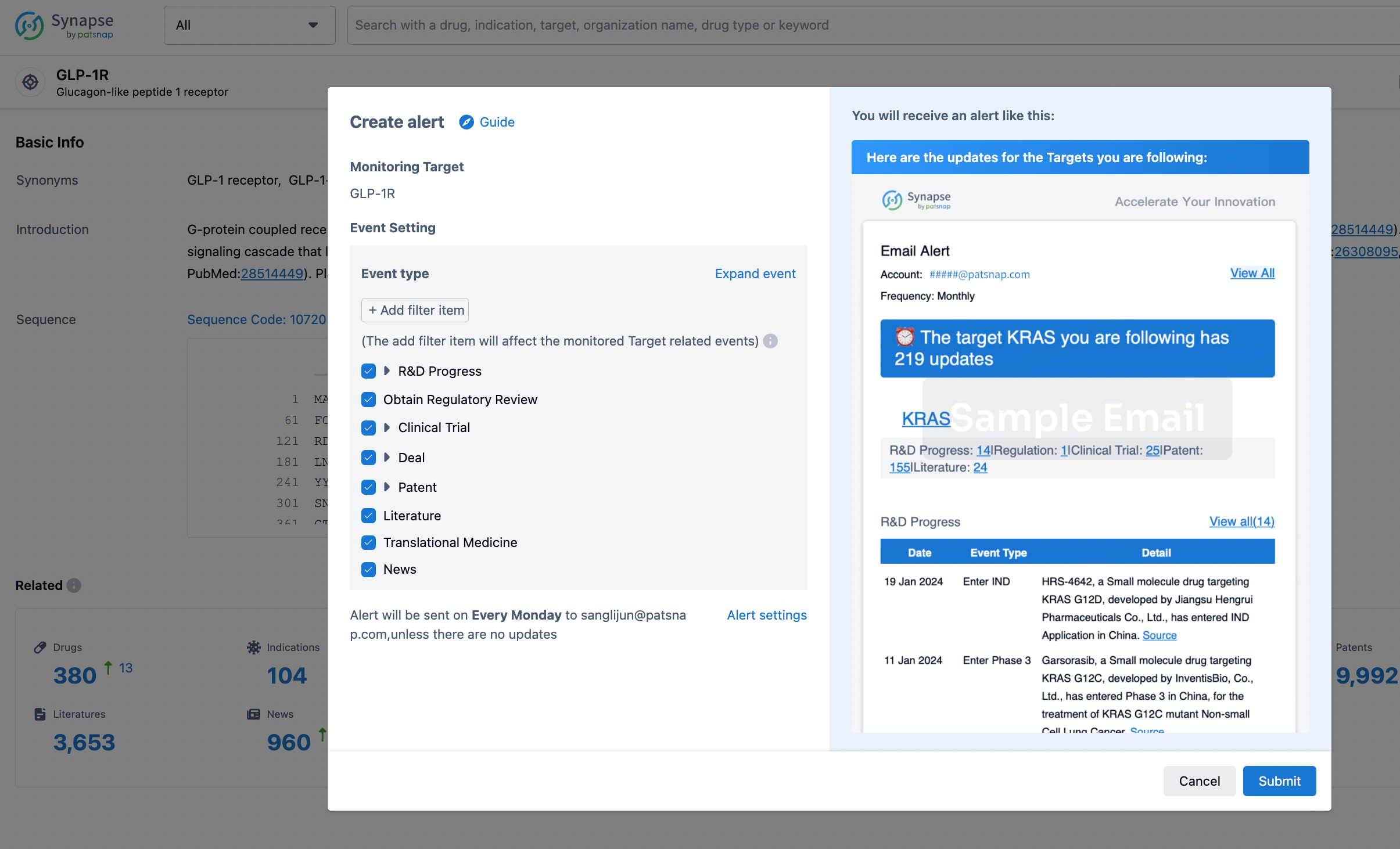Request Demo
What are Chemokine receptors antagonists and how do they work?
21 June 2024
Chemokine receptors antagonists are a class of therapeutic agents that have garnered significant attention in recent years due to their potential role in treating a wide variety of diseases. These compounds work by interfering with the function of chemokine receptors, which are critical players in the immune system. As researchers continue to uncover the complexities of these receptors and their ligands, the potential applications for chemokine receptor antagonists are expanding.
Chemokine receptors are a subset of G protein-coupled receptors (GPCRs) located on the surface of leukocytes and other cell types. They are activated by chemokines, a family of small cytokines that direct the movement of immune cells towards sites of inflammation, infection, and injury. This process, known as chemotaxis, is essential for an effective immune response. However, dysregulated chemokine signaling can contribute to the pathogenesis of numerous diseases, including autoimmune disorders, cancer, and chronic inflammatory conditions.
Chemokine receptor antagonists work by binding to chemokine receptors and blocking their interaction with endogenous chemokines. This blockade prevents the downstream signaling events that lead to cell migration and activation. By inhibiting these pathways, chemokine receptor antagonists can reduce the recruitment of immune cells to sites of inflammation or tumor growth, thereby ameliorating the associated pathology.
The mechanism of action of chemokine receptor antagonists involves competitive inhibition, where the antagonist competes with the endogenous ligand for binding to the receptor. Some antagonists may also induce receptor internalization or desensitization, further reducing the receptor's ability to respond to chemokine signals. Advanced medicinal chemistry techniques have enabled the development of highly selective antagonists that target specific chemokine receptors, minimizing off-target effects and enhancing therapeutic efficacy.
One of the most well-studied chemokine receptors is CCR5, which has been targeted by antagonists for the treatment of HIV. CCR5 is a co-receptor that facilitates the entry of HIV into host cells. Maraviroc, a small molecule CCR5 antagonist, has been approved for clinical use in HIV-infected patients. By blocking CCR5, maraviroc prevents the virus from entering cells, thereby reducing viral load and slowing disease progression. This success has spurred interest in developing antagonists for other chemokine receptors involved in different pathological processes.
Beyond HIV, chemokine receptor antagonists have shown promise in the treatment of autoimmune diseases such as rheumatoid arthritis and multiple sclerosis. In these conditions, aberrant chemokine signaling leads to the inappropriate activation and migration of immune cells, resulting in tissue damage and chronic inflammation. By inhibiting specific chemokine receptors, antagonists can reduce immune cell infiltration and alleviate symptoms.
Cancer is another area where chemokine receptor antagonists are being explored. Tumors often exploit chemokine signaling to create a microenvironment that supports their growth and metastasis. For example, the chemokine receptor CXCR4 is frequently overexpressed in various cancers and is associated with poor prognosis. Antagonists targeting CXCR4 can disrupt the tumor-promoting interactions between cancer cells and the surrounding stroma, thereby inhibiting tumor growth and metastasis.
Chronic inflammatory diseases such as inflammatory bowel disease (IBD) and chronic obstructive pulmonary disease (COPD) also stand to benefit from chemokine receptor antagonism. In these conditions, excessive chemokine signaling contributes to the persistent recruitment of inflammatory cells to affected tissues. By blocking specific chemokine receptors, antagonists can reduce inflammation and tissue damage, offering a new therapeutic avenue for these debilitating conditions.
In conclusion, chemokine receptor antagonists represent a promising class of therapeutic agents with broad potential applications. Their ability to modulate immune cell migration and activation makes them valuable tools in the treatment of infectious diseases, autoimmune disorders, cancer, and chronic inflammatory conditions. As our understanding of chemokine signaling continues to deepen, the development of novel chemokine receptor antagonists is likely to yield new and effective treatments for a wide range of diseases.
Chemokine receptors are a subset of G protein-coupled receptors (GPCRs) located on the surface of leukocytes and other cell types. They are activated by chemokines, a family of small cytokines that direct the movement of immune cells towards sites of inflammation, infection, and injury. This process, known as chemotaxis, is essential for an effective immune response. However, dysregulated chemokine signaling can contribute to the pathogenesis of numerous diseases, including autoimmune disorders, cancer, and chronic inflammatory conditions.
Chemokine receptor antagonists work by binding to chemokine receptors and blocking their interaction with endogenous chemokines. This blockade prevents the downstream signaling events that lead to cell migration and activation. By inhibiting these pathways, chemokine receptor antagonists can reduce the recruitment of immune cells to sites of inflammation or tumor growth, thereby ameliorating the associated pathology.
The mechanism of action of chemokine receptor antagonists involves competitive inhibition, where the antagonist competes with the endogenous ligand for binding to the receptor. Some antagonists may also induce receptor internalization or desensitization, further reducing the receptor's ability to respond to chemokine signals. Advanced medicinal chemistry techniques have enabled the development of highly selective antagonists that target specific chemokine receptors, minimizing off-target effects and enhancing therapeutic efficacy.
One of the most well-studied chemokine receptors is CCR5, which has been targeted by antagonists for the treatment of HIV. CCR5 is a co-receptor that facilitates the entry of HIV into host cells. Maraviroc, a small molecule CCR5 antagonist, has been approved for clinical use in HIV-infected patients. By blocking CCR5, maraviroc prevents the virus from entering cells, thereby reducing viral load and slowing disease progression. This success has spurred interest in developing antagonists for other chemokine receptors involved in different pathological processes.
Beyond HIV, chemokine receptor antagonists have shown promise in the treatment of autoimmune diseases such as rheumatoid arthritis and multiple sclerosis. In these conditions, aberrant chemokine signaling leads to the inappropriate activation and migration of immune cells, resulting in tissue damage and chronic inflammation. By inhibiting specific chemokine receptors, antagonists can reduce immune cell infiltration and alleviate symptoms.
Cancer is another area where chemokine receptor antagonists are being explored. Tumors often exploit chemokine signaling to create a microenvironment that supports their growth and metastasis. For example, the chemokine receptor CXCR4 is frequently overexpressed in various cancers and is associated with poor prognosis. Antagonists targeting CXCR4 can disrupt the tumor-promoting interactions between cancer cells and the surrounding stroma, thereby inhibiting tumor growth and metastasis.
Chronic inflammatory diseases such as inflammatory bowel disease (IBD) and chronic obstructive pulmonary disease (COPD) also stand to benefit from chemokine receptor antagonism. In these conditions, excessive chemokine signaling contributes to the persistent recruitment of inflammatory cells to affected tissues. By blocking specific chemokine receptors, antagonists can reduce inflammation and tissue damage, offering a new therapeutic avenue for these debilitating conditions.
In conclusion, chemokine receptor antagonists represent a promising class of therapeutic agents with broad potential applications. Their ability to modulate immune cell migration and activation makes them valuable tools in the treatment of infectious diseases, autoimmune disorders, cancer, and chronic inflammatory conditions. As our understanding of chemokine signaling continues to deepen, the development of novel chemokine receptor antagonists is likely to yield new and effective treatments for a wide range of diseases.
How to obtain the latest development progress of all targets?
In the Synapse database, you can stay updated on the latest research and development advances of all targets. This service is accessible anytime and anywhere, with updates available daily or weekly. Use the "Set Alert" function to stay informed. Click on the image below to embark on a brand new journey of drug discovery!
AI Agents Built for Biopharma Breakthroughs
Accelerate discovery. Empower decisions. Transform outcomes.
Get started for free today!
Accelerate Strategic R&D decision making with Synapse, PatSnap’s AI-powered Connected Innovation Intelligence Platform Built for Life Sciences Professionals.
Start your data trial now!
Synapse data is also accessible to external entities via APIs or data packages. Empower better decisions with the latest in pharmaceutical intelligence.


